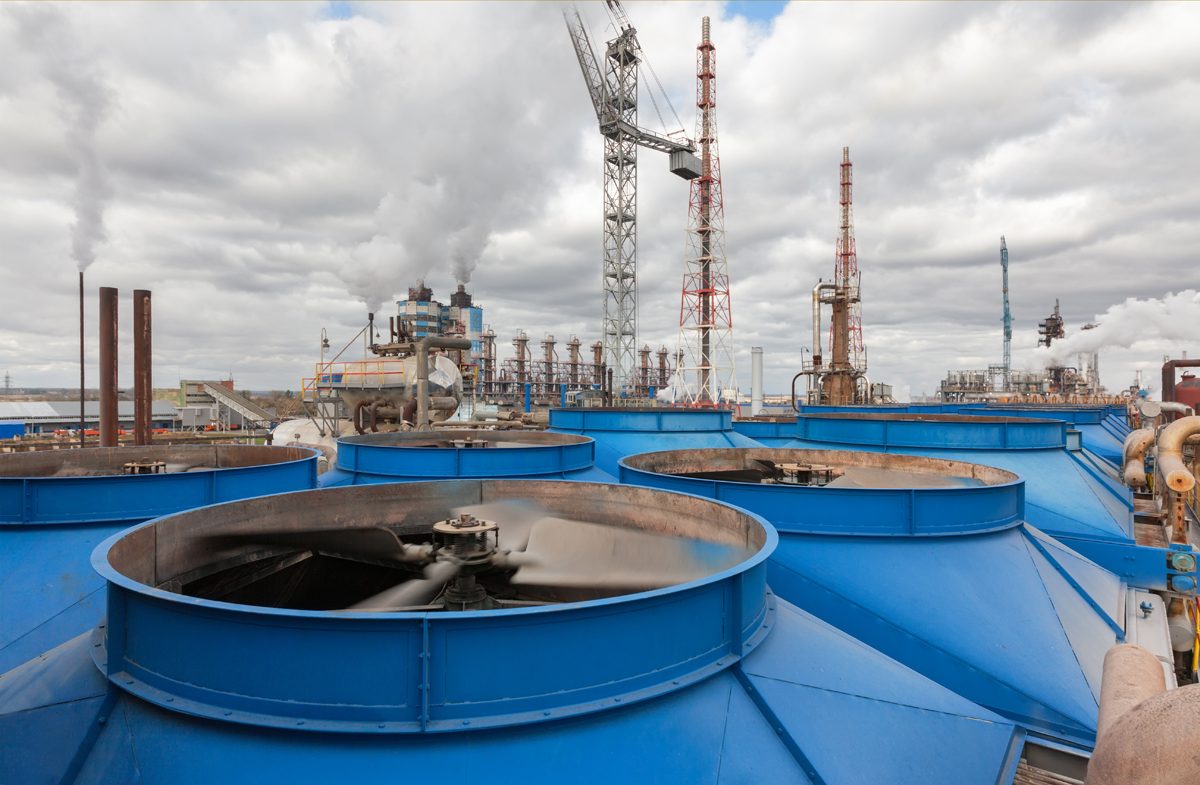What are dry cooling towers and how do they differ from other applications used today for cooling purposes?
What Is A Cooling Tower?
A cooling tower can be thought of as a specialized heat exchanger where water and air meet with the purpose of reducing the temperature of the water. When this happens, a small total of the water evaporates, hence reducing the water temperature that is circulated throughout the tower.
This water is pumped through pipes to the cooling tower. Nozzles are used as the water sprays onto material known as fill that slows the flow of the water as it travels through the cooling tower and maximizes air and water contact. When they meet, a cooling action is created and the cooled water is then pumped back to the processing equipment where it absorbs hear. From there it is pumped back to the cooling tower and obviously, cooled again.
Dry Cooling Towers Defined
A dry cooling tower is a closed-circuit tower, which operates by transferring excess heat from the system. These towers operate by heat transfer that occurs through a surface separating ambient air and working fluid(s). Either water or a mixture of water-glycol is the medium used within these towers. The principle of heat transfer takes place by heat exchanger with extended fins. Air can be introduced through natural or mechanical draft in order to move the air through air-cooled heat exchangers.
Unlike most other towers, dry towers do not use evaporation. As a result, the consumption of makeup water is minimal. Additionally, the fan in the system uses an electric motor to operate. The system overall functions with air cooling technology and the hot water circulation enables the heat exchange because the tubes are exposed to the ambient air flow surrounding them.
For an improved affect on performance, there is an increase in volumetric flow rate of air through the heat exchangers. Meanwhile, one of the downsides of this system is the lower efficiency, especially when the ambient air temperature is high. The tower has been designed with controlled expansion of both the tube and fin, which provides a smooth and clean tube for water pressure drops. The motors are specifically designed to keep the efficiency high with moisture, dust and rain-resistance.
Dry Cooling Towers Application
While there are different performance ranges for the dry cooling system, it is possible to choose the best one for your specific industry needs. Ranged from 5-2,000 kW performances, these systems have different noise levels and typically are destined for outdoor installation. Dry cooling towers can be used in the solar industry, factory cooling, power plant and plastic industry, among others.
Yes, you can use dry cooling towers in computer room air conditioning systems and water-cooled chilled water air condition systems, among others. In particular, this tower application works well in places where water resources are scarce. They can easily help eliminate excess heat without damaging the outside environment.
Regular maintenance is needed with dry cooling towers to make sure the system is operating as efficiently as possible. This regular maintenance will prevent future damage and avoid compressor failure. When the dry cooling system runs efficiently, energy consumption and costs will plummet.
Looking For Cooling Tower Maintenance?
Cooling Tower Products has over 4 decades of experience with cooling tower maintenance and can help you with any cooling tower related project. Contact us today and get the professionals at Cooling Tower products on your side.




